When visiting Sapporo, Hokkaido’s capital city, one of the most practical and reliable ways to get around is by using the Sapporo Municipal Subway (札幌市営地下鉄). Known for its convenience, cleanliness, and easy navigation, the subway has become a backbone of transportation for both locals and tourists. Especially during Sapporo’s snowy winters, the subway is a lifesaver—keeping you warm and on time while avoiding slippery sidewalks.
This guide covers everything you need to know about the Sapporo subway system: its history, lines, tickets, passes, etiquette, and even suggested routes to popular destinations.
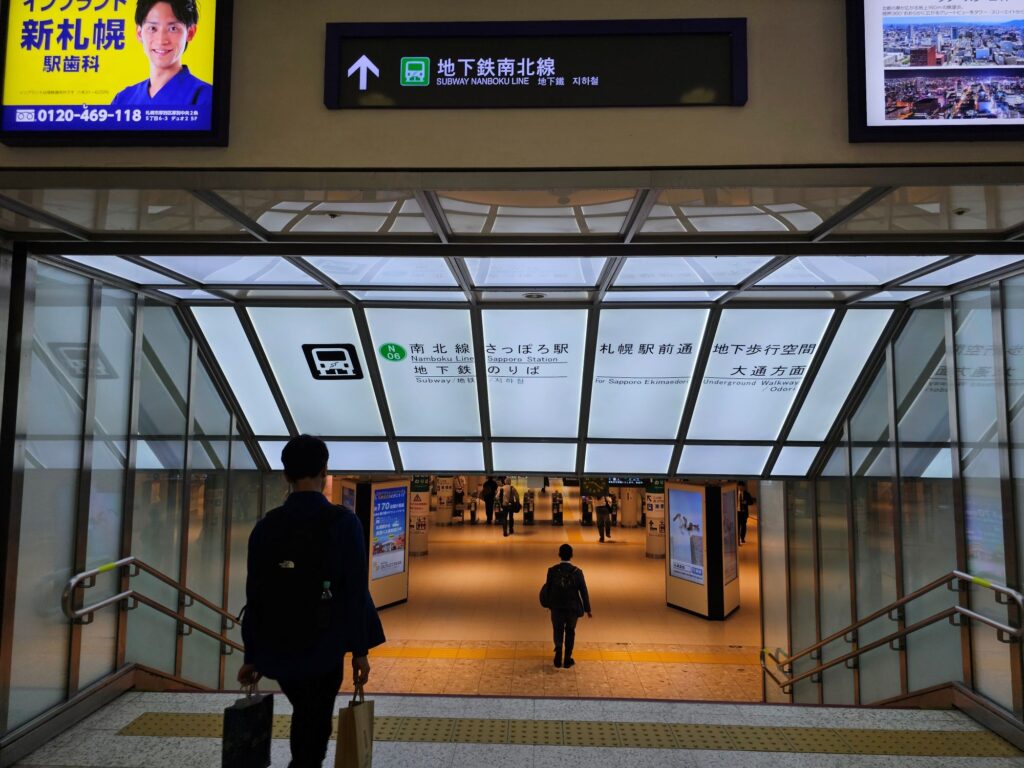
A Brief Background
The Sapporo Subway began operating in 1971, just before the Sapporo Winter Olympics in 1972. The city needed an efficient system to handle large crowds, and the subway became the answer. Interestingly, the trains use rubber tires instead of steel wheels, which makes the ride quieter and smoother—perfect for a city where snowy conditions could otherwise cause problems.
Today, the network consists of three color-coded lines with a total of 49 stations, and it remains one of the easiest subway systems in Japan to navigate.
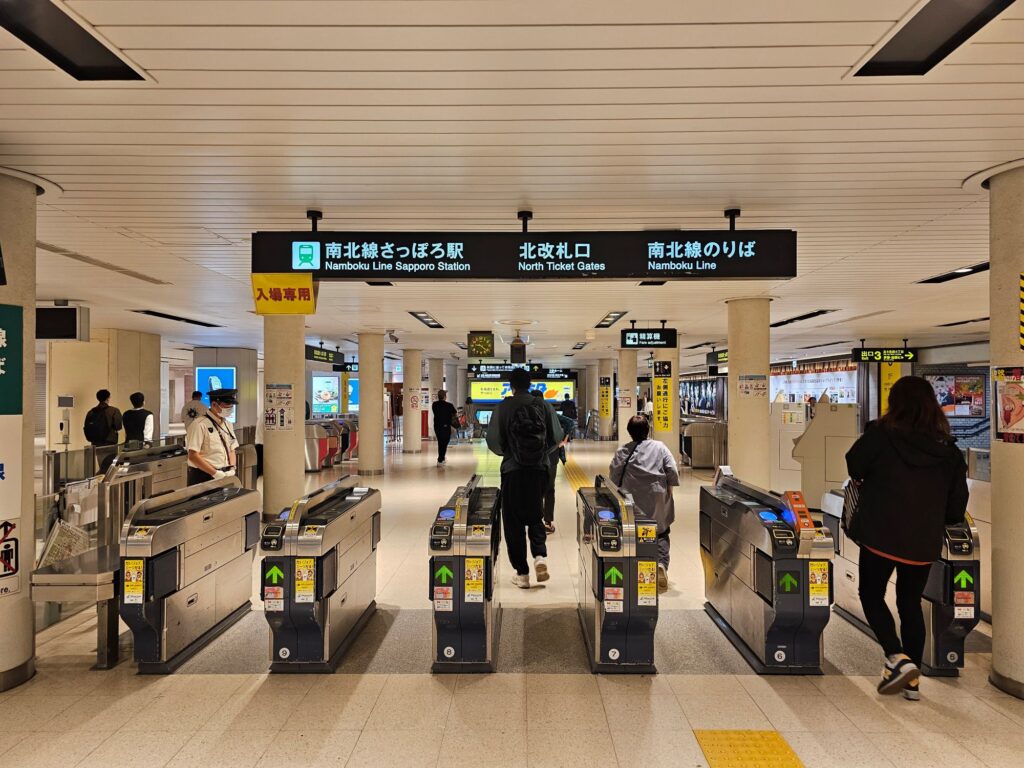
The Three Subway Lines
Each line is marked with a color, a letter, and station numbers, making it intuitive even if you don’t speak Japanese.
- Namboku Line (Green, N): Runs north–south from Asabu (N01) to Makomanai (N16). It connects key downtown stops like Sapporo Station, Odori, and Susukino. If you’re moving through the city center, this is your go-to line.
- Tōzai Line (Orange, T): Runs east–west from Miyanosawa (T01) to Shin-Sapporo (T19). It links the central city to residential suburbs and tourist attractions like Shiroi Koibito Park.
- Tōhō Line (Blue, H): Runs from Sakaemachi (H01) in the northeast to Fukuzumi (H14) in the south. It’s the line to take if you’re heading to the Sapporo Dome, home of baseball games and concerts.
All three lines intersect at Odori Station, the main transfer hub. Together, they form a network that neatly covers the city’s main attractions.

Tickets and Fares
The Sapporo Subway is distance-based, so fares vary depending on how far you travel. Standard fares range from ¥210 to ¥380.
- Single Tickets: Buy them from machines near station entrances. Machines have English options, and fare charts above them help you choose the correct amount.
- IC Cards: The local card is called SAPICA, but nationwide cards like Suica, Kitaca, PASMO also work. Simply tap at the gates to enter and exit.
- One-Day Subway Pass: For ¥830 (adult), you get unlimited rides on all three lines for one day. This is perfect if you’re sightseeing around Sapporo.
- Donichika Ticket: A special weekend/holiday pass priced at ¥520 (adult) for unlimited rides in a single day. Ideal if you’re exploring on Saturday or Sunday.
If you plan to use the subway more than three times in a day, a pass usually saves money.
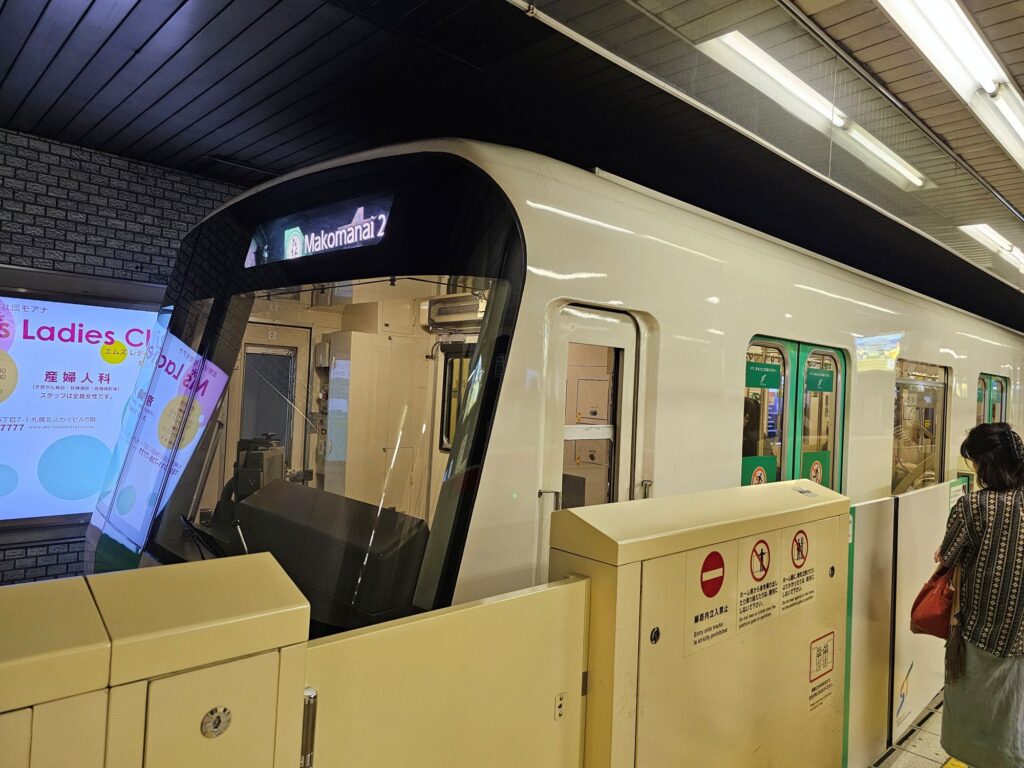
Step-by-Step Guide to Riding
- Enter the station: Find your nearest entrance, usually marked with a color and line sign.
- Buy your ticket or use IC card:
- For tickets: select your destination and fare on the machine, pay, and take your ticket.
- For IC cards: tap your card at the gate.
- Check signage: Look for the line color (Green, Orange, or Blue) and the direction (station numbers are key—for example, “N01 → N16”).
- Board the train: Trains arrive every 5–7 minutes during the day.
- Transfers: At Odori or Sapporo Station, follow the transfer signs; they’re bilingual and easy to spot.
- Exit the station: Tap your card or insert your ticket. If your fare is insufficient, use the fare adjustment machine next to the gates.
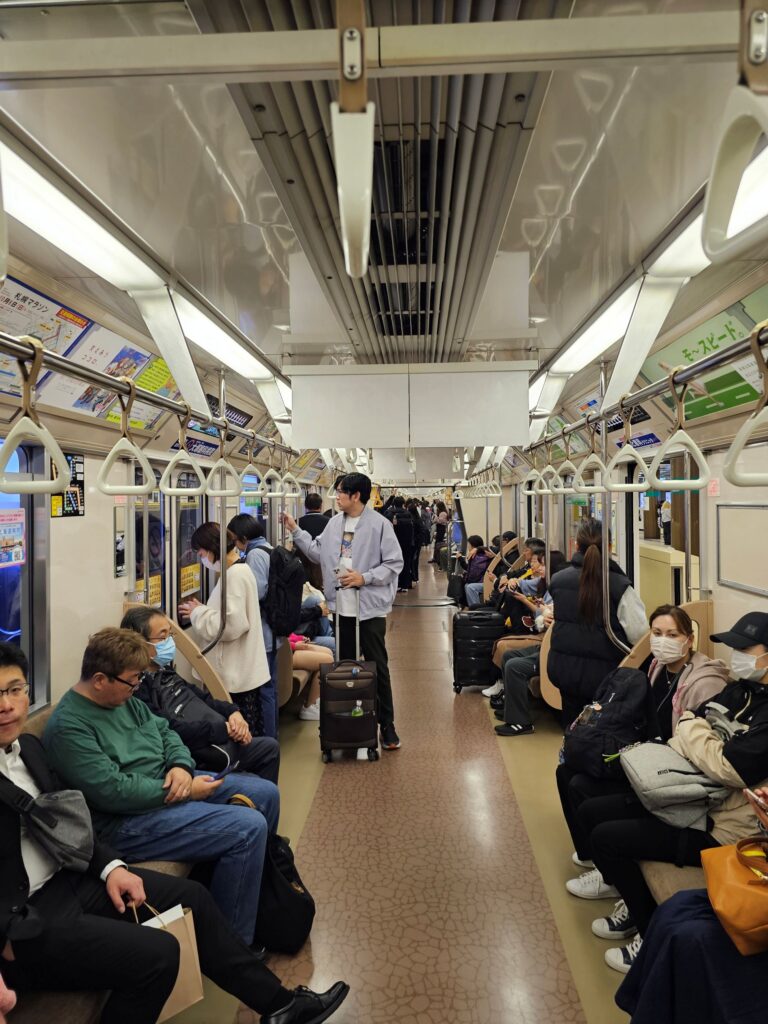
Subway Etiquette
- Keep your phone on silent mode and avoid loud conversations.
- Priority seats are reserved for elderly, pregnant women, and people with disabilities.
- During rush hours, be prepared for crowds; stand to the side of the doors to let passengers exit first.
- Keep your luggage or bags close to avoid blocking the aisle.

Traveler-Friendly Features
- Operating Hours: Roughly 6:00 AM to midnight. Last trains vary by line, so check if you’re staying out late.
- Bilingual Signs: Almost all station names are written in both Japanese and English.
- Accessibility: Elevators and wide gates are available at major stations, making it stroller- and wheelchair-friendly.
- Weather Advantage: Underground passageways connect many stations to shopping malls, so you can walk between them without stepping outside into the snow.
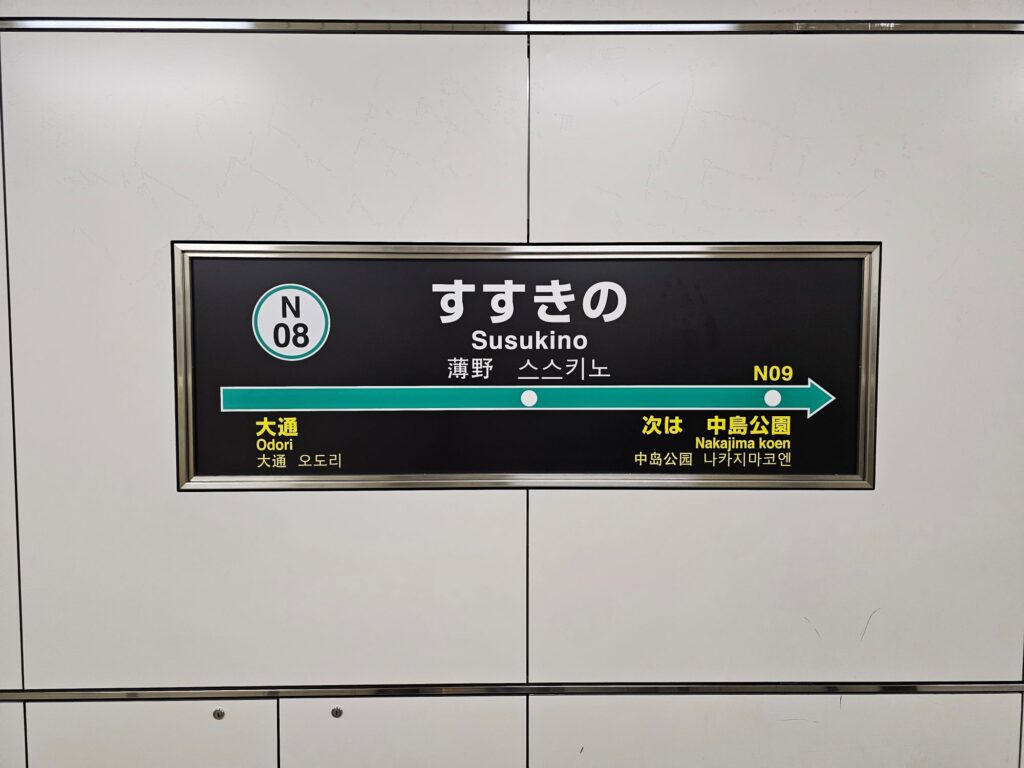
Sample Routes for Tourists
- Sapporo Station → Odori Park: Just one stop on the Namboku Line. Perfect if you’re visiting during the Snow Festival.
- Sapporo Station → Susukino: Ride the Namboku Line southbound to enjoy the nightlife district.
- Sapporo Station → Sapporo Dome: Take the Tōhō Line all the way to Fukuzumi.
- Odori → Shiroi Koibito Park: Transfer to the Tōzai Line toward Miyanosawa, then a short bus ride.
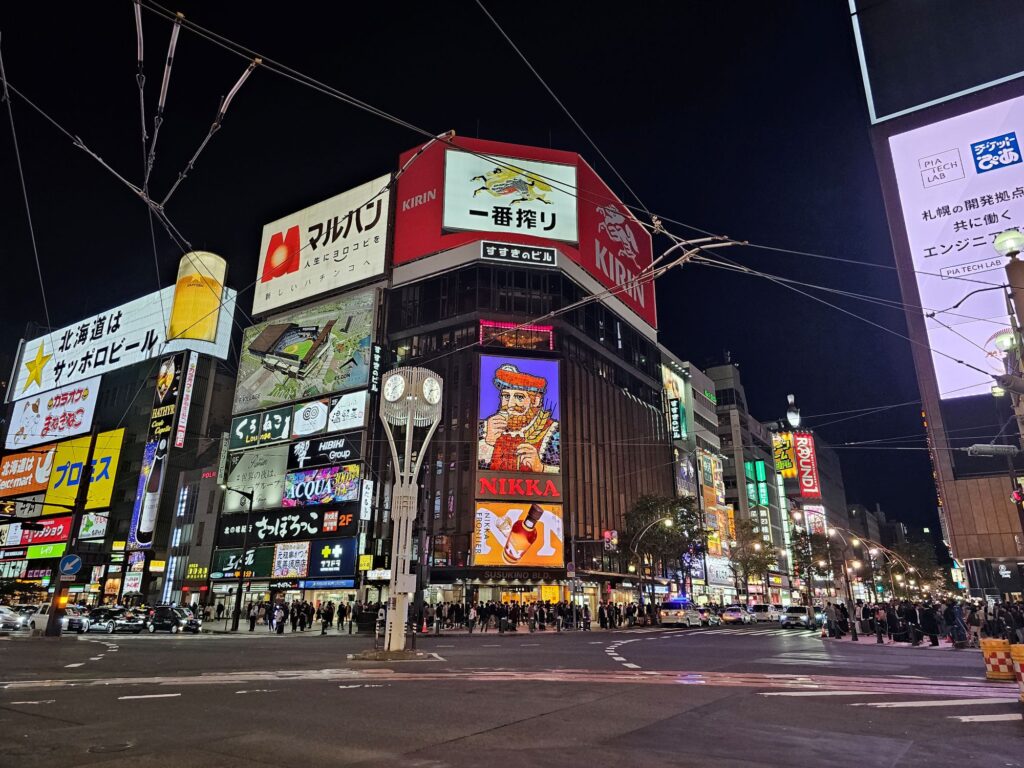
Final Thoughts
The Sapporo Subway is not only practical but also surprisingly easy to use. With only three lines, clear station codes, and plenty of English signage, even first-time visitors can navigate it without stress. Day passes like the Donichika Ticket make it budget-friendly, and the indoor connections protect you from Hokkaido’s famously harsh winters.
Whether you’re headed to Odori Park, Susukino, Sapporo Dome, or just exploring the city center, the subway will be your reliable travel companion.
Sapporo Stellar Place: The One-Stop Shopping & Dining Hub at Sapporo Station

